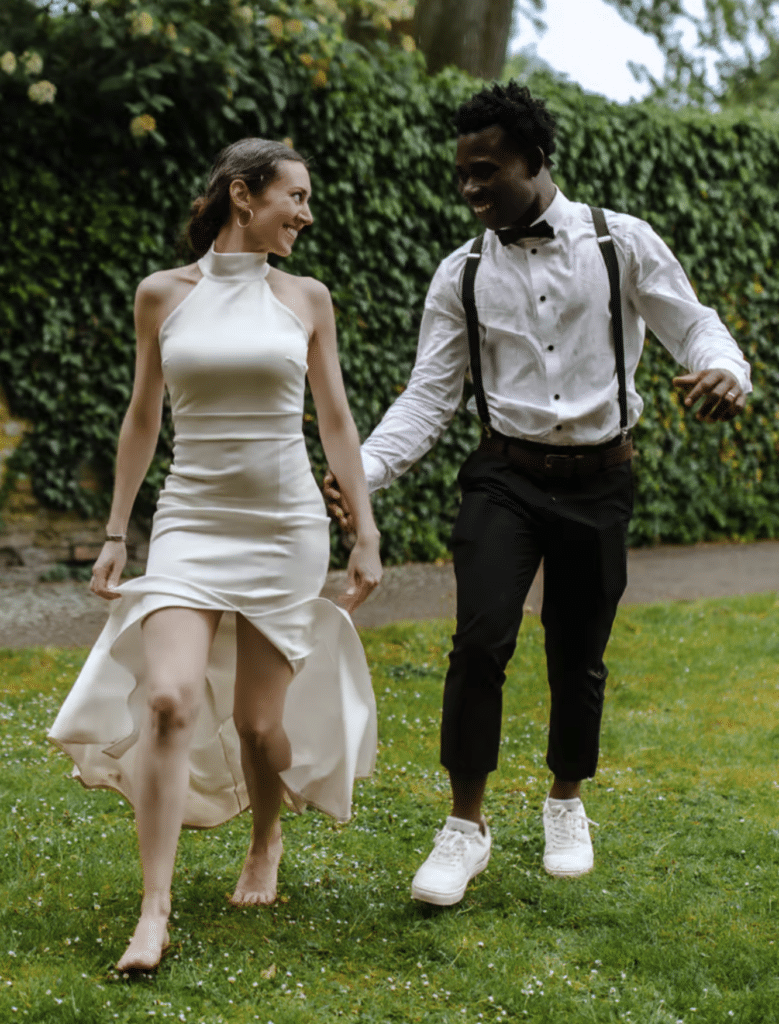On first impression of the Munich U-Bahn system, it can easily be congratulated on its efficiency and ease. Each stop loads and unloads passengers eager to reach their destinations. However, personal experience and introspection lead me to ask the question: “How did I learn to ride the U-Bahn? How did I get so good at it?”
I already know, before the schedule board tells me, that the train is coming. I feel a rumble beneath my feet. The blast of air reaches expectant passengers before the engine does. We all snap to attention and line up to honor the opening of the doors into the tubular temples of transportation. Just as we know and adhere to the unspoken rules of behavior in church, we know and adhere to the unspoken rules of U-Bahn etiquette.
One is allowed to look out the windows, regardless of the fact that a majority of the view is a dirty black tunnel racing by, banded by rivers of piping and electrical wiring. When given the choice, no man in his right mind would rightly choose this as his view from his kitchen window…but we stare nonetheless. This journey to the center of the earth is occasionally highlighted by the platforms where an exciting thirty seconds of people watching breaks the monotony. Many platforms have themes. Koenigsplatz is littered with idols of past ages to lure tourists to the museums above. Theresienwiese is designed to look like the inside of a beer barrel to comfort, year round, those who live only for Oktoberfest. A talented, passive “people-watcher” can stare into the blackness and reflect on the reflections of fellow passengers. In an end seat facing the connecting car, one can easily entertain oneself by looking into the next car, like a “peeping Tom”. There is less danger of unsolicited eye contact because these people are busy avoiding eye contact with their neighbors. If actual eye contact is made, it is polite to quickly avert the eyes or just smile. Contemplating the network map is a terrific diversion. Here one could lose oneself in the myriad lines and colors going to neighborhoods yet unknown. All flirtatious toddlers are of course entitled to ogle, drool, and smile at anyone in range.
It is always interesting to observe gender difference in support-pole grasping styles. It is rare to find a woman not holding on. Women have always enjoyed the concept of mutual support. Men, however, boldly stand or lean daringly without holding on to nearby poles or railings. They pit their center of gravity against the thrusting and breaking of the Bahn…ahh yes, conquer the machine. Their muscles cry in unison as they casually attempt to reach for support before losing their balance at the next stop.
Elderly people or pregnant women are entitled to a seat near an exit. One should not be shy in requesting this space! Munich residents are generally gallant, and when made aware of a need, they will relinquish their well-warmed cushion. In a case of hesitation, the nearest elderly woman on hand will reprimand the passenger, in a tone reminiscent of someone’s mother, that motivates everyone to be of service. A journey lasting only a few stops does not merit sitting. When one needs to get up again, it will only annoy one’s neighbors who moments ago moved to give space to sit down.
While standing in the gangway between the doors, be prepared to be shuffled elsewhere when the frequent passenger “parent with stroller” boards. They will quickly park themselves to the rear of the gangway, against one of the seatbacks, facing their future exit door. This maneuver requires time, but it makes exiting much quicker.
A canned sardine sensation is rare during a normal ride. Crowding can occur during the commuter rush, and when school lets out at 1:30 p.m. In these high-traffic times, it is common to experience some pushing and shoving. Avoiding these infringements of personal space can be managed by following another unspoken but well-practiced rule when entering and exiting the train. When boarding, stand to the sides of the doors to allow exiting passengers to pass. When exiting, stay to the middle until passing the crowd of new passengers ready to board. Any infringement of these imaginary queues can often cause chaos, confusion and much shuffling.
The hustle and bustle, remembering rules and one’s destinations is stressful for the novice rider. Regardless of one’s state of mind, it is common to be greeted upon entering or exiting the train by a friendly “Bitte zurueck bleiben”. It is unclear to me if it is a lack of modern technology or a desire to maintain a sense of personal service on the part of the MVV. Each driver, who spends a majority if their day racing through the dark bowels of the city like a mole on a mission, seems to add his or her own personal tone and tune to the phrase. I am personally grateful not to have to endure any annoying beeps or buzzers warning me of the eminent and ceremonial closing of the doors. Remember, when exiting toward the front of the train, on the way to sun or star shine, to give a smile or wave to the driver. It is not part of the unspoken rules of U-Bahn etiquette, but it will definitely brighten any tunnel-dweller’s day.

